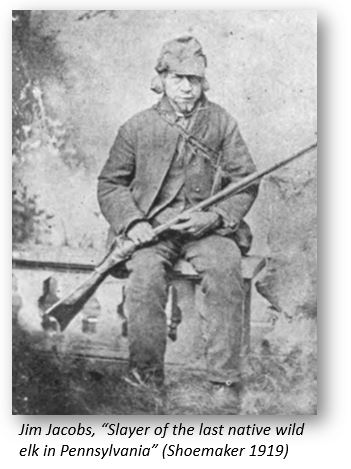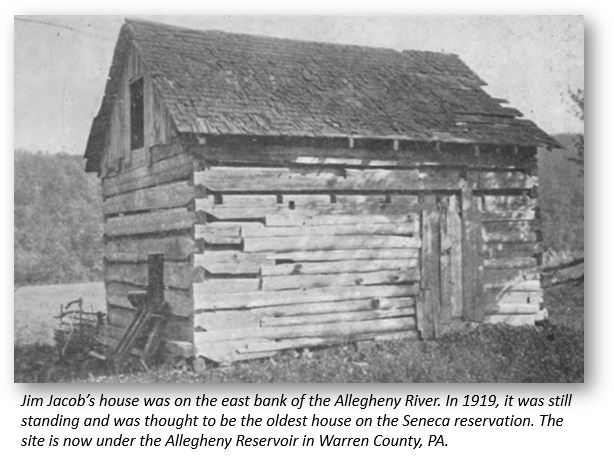Jim Jacobs, also known as The Seneca Bear Hunter, is said to have killed the last wild native elk in Pennsylvania. But, did he? There has been much discussion since he killed an elk in Flag Swamp in 1867 about whether or not that was the last wild native elk.
The arguments are presented in Extinct Pennsylvania Animals, Part II by Henry W. Shoemaker (1919). Shoemaker was a newspaper publisher in Altoona, PA and other central Pennsylvania towns and had a wide-ranging interest in the heritage of the commonwealth. He was both a conservationist and a folklorist who enjoyed, and valued, collecting the stories of hunters and lumbermen. He was a prolific writer and understood that there was a subtle but important difference between "history" and what today we call "heritage."
So who was Jim Jacobs? Shoemaker (1919, pages 19-20) described him as
. . ."one of the most interesting figures in the sporting annals of Pennsylvania. He was a grandson of Captain Jacobs, the brave defender of Fort Kittanning, and his mother was a daughter of the Seneca chieftain, Cornplanter. He was, therefore, of the Indian aristocracy. 'The Seneca Bear Hunter,' as the great nimrod was generally called, was born near Gawango [sic - Gowango], on Cornplanter's Reservation in Warren County in 1795. From the time he was old enough to 'tote a gun' he was noted as a slayer of big game. Innumerable were the elks, deer and bears that fell before his unerring rifle.
On June 25, 1814, with Captain John Titus and other Senecas, he participated in the famous march, 80 miles, between sunrise and sunset, between Cold Spring, on the Seneca Reservation, and Lundy's Lane, on the Niagara River, participating in the battle of that name and helping to win the victory for the American forces.
In 1867 he killed an elk in Flag Swamp, Elk County [the headwaters of Bennetts Branch, between Dubois and Penfield] that by some authorities is held to be the last native wild elk in Pennsylvania. He was several times married. By his first wife, according to C. W. Dickinson, he had one daughter who died of consumption while still in her teens. By other wives he had two sons. John C. French says that probably Jim Jacobson (also a noted elk hunter) and 'Dan' Gleason, the wolf hunter, were his sons.
On the night of February 24, 1880, there was a great blizzard in northern Pennsylvania. Jacobs, then in his 90th year, happened on the tracks of the Erie Railroad, near Bradford, when he was hit by a freight train and killed."
That would seem to be the end of Jacobs' story, except for this curious incident. During the early fall of 1884, 4 years after Jacobs' demise, John C. French, of Roulette, was on the Seneca Reservation when he claims to have met the famous hunter in the woods, carrying his long rifle, as if on a hunt. French claims that he "engaged in an interesting conversation with him." This was not the only report of sightings of Jacobs after he was supposedly killed by the train. Mr. French himself offered an explanation, as Shoemaker noted (1919: 21):
. . ."my seeing the Seneca Bear Hunter does not prove that he was alive. The Indians were firm believers in ghosts, and if he was actually killed several years previously, they would have said that I merely saw his shade revisiting the favorite hunting grounds."
What do you think?


